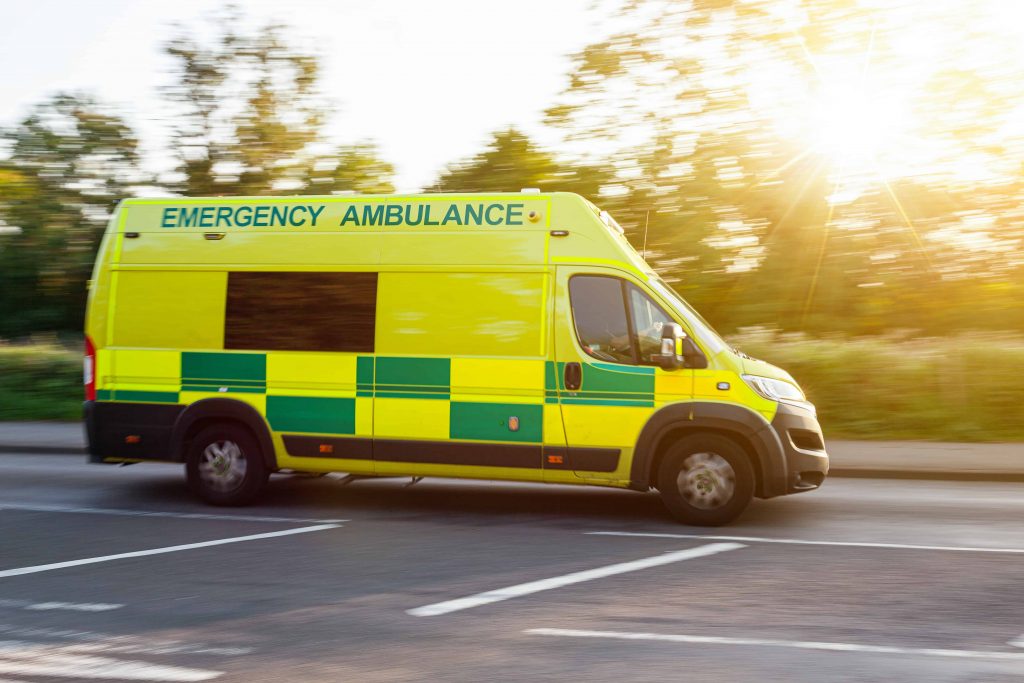Emergency Service Network (ESN)
The UK Home Office is now prepping for a cross-government programme to switch off the current Airwave service used by the emergency services, due to its limited capabilities, and implement a new and improved system. The new system, known as the Emergency Services Network (ESN), will be transformative for day-to-day operations within the emergency services.
What is ESN?
ESN aims to assist first responders such as police, fire and rescue, and ambulance services by giving them access to connectivity on the move. A 4G network is used to transmit fast, safe, and secure voice, video and data allowing the 300,000 frontline responders to access life-saving data immediately. Responders will also be able to share data with others within the emergency services, allowing hospitals and police stations to prepare for incoming patients or criminals.
The 4G network, provided by EE, ensures that high speed mobile technology allows communication between emergency services and will take priority over all other network traffic – even around peak times. This faster network will offer more coverage and provide emergency services access to the newest mobile applications and innovations as soon as they become available.
Delivery
ESN will provide mission critical communication the emergency services can rely on, which will be delivered by the Emergency Service Mobile Communication Programme. This programme, at the time of writing, is focused on the procurement of products, coverage, and services that the emergency services require – they will then be tested, adopted, and then used as and when they become available. This rollout is planned for the first half of 2024 and should be completed by 2026.
The software of the ESN system will be provided by Motorola Solutions, with the supporting infrastructure being built by EE. This infrastructure will be created by upgrading EE’s existing network as well as deploying around 950 more masts, to offer greater coverage.
Despite significant investment in infrastructure, even locations that do have access to EE’s 4G network can still suffer from poor connectivity – in-building coverage is an ongoing problem, due to materials used in construction such as steel, wood, and Low-E glass. This is particularly problematic in secure buildings such as police stations, fire stations, and hospitals. Another problem is remote areas with poor mobile connectivity – construction of new mobile masts is going to take several years, and there will still be issues in areas with poor line of sight, such as valleys.
Fortunately, Boost Pro Systems’ mobile connectivity improvement solutions can help with in-building signal issues, as well as in-vehicle, the latter being particularly key to the ESN’s mobility and effectiveness. By equipping buildings and vehicles with mobile repeaters – as we have done for many emergency service buildings including Cumbria County Council’s Blue Light Hub, Northern Ireland Fire & Rescue Service, and Wakefield Fire Station, as well as numerous hospitals across the UK – we can enable maximum effectiveness of the ESN.
Products
The software products included within the ESN system are being developed by Motorola Solutions, these include:
- ESN Connect is a sim-only offer to connect vehicle modems with the ESN. It will have the ability to prioritise data and specify a higher level of prioritisation via the critical data bearer function.
- ESN Direct is a new push-to-talk and critical messaging product on smartphones.
- ESN beta and ESN version 1 will delver all public safety features and functionality required by the emergency services. This will be on a specialised handset or a fixed vehicle device
ESN Coverage
For ESN to be successfully and safely transitioned, it is essential that all areas of Great Britain have coverage. EE is to be responsible for all primary area coverage, with the government focusing on the most rural and remote locations. For the following to be achieved, 950 new masts must be built and 19,000 sites need to be upgraded to offer coverage.
Coverage will be delivered to:
- Great Britain primary area coverage: major and minor roads, selected buildings, select road tunnels and public facilities, as well as 12 miles out to sea and up to 500 feet above the ground
- Extended area service (EAS): major and minor roads that fall outside of those in the primary coverage area. These are rural areas including many national parks and areas of outstanding natural beauty
- London Underground
- Air coverage: above 500 feet up to 10,000 feet
Benefits of the Emergency Services Network
The ESN, once fully realised:
- Allows emergency services to access potentially life-saving data faster
- Can give access to new innovations and applications, unlike the current system, Airwaves
- Enables 999 calls to be made securely in the most remote and rural locations
- Prioritisation can be made for emergency services during peak times
- The improvement of infrastructure in rural locations can also improve their commercial capabilities for digital, culture, media, and sport
What Boost Pro Systems can do for the ESN
As highlighted, Boost Pro Systems can provide a solution to connectivity issues within the existing EE infrastructure, whether that be in emergency service buildings or vehicles. As a proof of concept, we have already implemented our licence-exempt mobile repeaters into our growing portfolio of healthcare buildings and vehicles, to improve EE 4G voice and data coverage.
Our commercial-grade signal repeaters offer:
- Scalable passive and hybrid DAS for ESN, whether in-building or in-vehicle
- Extended 4G/ LTE voice and data coverage (5G enabled)
- Up to 100db signal gain, the highest in the industry – this means that only a trace signal needs to be found, which can then be amplified to support the ESN in particularly remote areas
- Multi-carrier support with carrier switching
- Indoor/ outdoor NEMA 4 rated
- Network safe
- Remotely managed software updates, ensuring the hardware is future proofed.
To learn more about our work with the Emergency Services and NHS, view our case studies:
